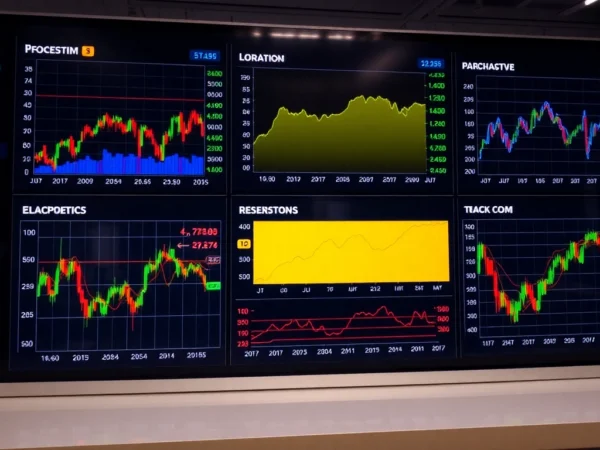Mastering Trading Updates: Essential Strategies for Real-Time Market Insights
Introduction to Trading Updates and Their Importance
In today’s fast-paced financial landscape, staying informed about market movements is paramount for traders, investors, and financial professionals alike. Trading updates serve as critical tools that provide real-time insights into market conditions, economic indicators, and geopolitical developments that influence asset prices. These updates foster informed decision-making, help manage risk, and enable traders to adapt swiftly to changing circumstances.
Reliable sources like Trading Updates consolidate essential information, offering clarity amidst complexity. Whether you’re a day trader reacting to rapid fluctuations or a long-term investor assessing macroeconomic trends, understanding and leveraging trading updates can significantly enhance your market performance and strategic planning.
What Are Trading Updates and Why They Matter
Trading updates encompass a broad spectrum of information, including live market data, news flows, economic releases, and technical signals. They reflect current price movements, volume changes, and market sentiment. These updates are not static; they are dynamic feeds that provide traders with timely information essential for executing trades effectively.
The importance of trading updates lies in their ability to inform traders about immediate market conditions, upcoming economic events, or geopolitical shifts that could impact asset classes such as stocks, commodities, bonds, or currencies. For instance, a sudden spike in volatility often correlates with breaking news or policy announcements, making rapid access to accurate updates invaluable for managing risks and capitalizing on new opportunities.
Understanding Market Volatility through Trading Updates
Market volatility is an inherent feature of financial markets, exemplified by rapid price swings and uncertainty. Trading updates help decode this volatility by providing real-time data and context. When geopolitical tensions rise or economic indicators show unexpected results, trading updates illuminate the market’s reaction, helping traders assess whether the moves are temporary corrections or signs of longer-term shifts.
For example, during earnings season, live updates on corporate earnings reports significantly influence stock prices. A trader monitoring these updates can strategically adjust positions, reduce exposure to volatile stocks, or jump into promising opportunities. Moreover, recognizing patterns of increased volatility—such as during pre-market or after-hours trading—can enhance risk management strategies.
Benefits of Staying Informed with Trading Updates
- Enhanced Decision-Making: Real-time information enables timely entries and exits, improving trade accuracy.
- Risk Mitigation: Awareness of upcoming economic events or geopolitical developments helps avoid unfavorable trades or losses.
- Strategic Adaptation: Continuous updates allow traders to refine strategies in response to evolving market conditions.
- Competitive Advantage: Being ahead of the market curve offers an edge over less-informed traders.
- Broader Market Perspective: Compiling global updates provides a comprehensive view, helping traders see the bigger picture.
Key Components of Effective Trading Updates
Real-Time Data and Market Indicators
At the core of trading updates are real-time data streams—price quotes, bid-ask spreads, trading volume, and market depth. Key indicators like moving averages, RSI (Relative Strength Index), MACD (Moving Average Convergence Divergence), and Bollinger Bands serve as essential tools for technical analysis. Accurate, timely data combined with these indicators enables traders to identify entry and exit points with confidence.
Furthermore, advanced technological platforms integrate algorithmic signals that parse vast datasets instantaneously, offering traders actionable insights without delay. Such tools are invaluable for high-frequency trading or scalping strategies, where millisecond advantages translate into profits.
News Flows and Economic Events Impacting Markets
Market-moving news includes economic reports (GDP, unemployment rates, inflation data), corporate earnings, central bank announcements, and geopolitical developments. These factors can shift sentiment dramatically, causing sharp price movements.
For example, a surprise interest rate cut by the Federal Reserve might lead to a surge in stock markets and a slump in the dollar. Traders rely on live news feeds, economic calendars, and expert commentary to understand these impacts. The ability to parse relevant news quickly and accurately can make the difference between capitalizing on a trend or suffering losses from unexpected volatility.
Technological Tools for Accurate Updates
Technology plays a crucial role in delivering precise updates. Real-time streaming platforms, API integrations, and AI-powered analysis tools collect and interpret data swiftly. Features like customizable dashboards, alerts, and automated notifications help traders stay ahead of developments.
Many professional traders utilize advanced charting software for technical analysis alongside news aggregators that filter relevant economic events. Ensuring your tools are reliable, fast, and tailored to your trading style is essential for maintaining a competitive edge.
Implementing Trading Updates in Your Strategy
Selecting Reliable Sources for Trading Updates
The foundation of effective trading updates is quality sources. Leading financial news outlets like CNBC, MarketWatch, Reuters, and Nasdaq provide comprehensive market coverage. When choosing sources, prioritize those with proven accuracy, speed, and editorial integrity.
Subscriptions to specialized platforms—such as Bloomberg Terminal, TradingView, or Investing.com—offer institutional-grade data and analytics. For retail traders, free sources like Yahoo Finance or CNBC’s pre-market sections can complement paid services. The key is cross-referencing multiple sources for validation and timeliness.
Integrating Updates into Daily Trading Routines
Consistency is vital. Establish a daily routine that includes checking pre-market data, economic calendars, and overnight news. Use watchlists and alerts to monitor key assets and indicators. During trading hours, leverage real-time feeds to stay responsive to sudden market shifts.
Many traders find it effective to schedule dedicated review sessions before market open, mid-day check-ins, and post-close reviews. Automated alerts for specific events—like earnings releases or geopolitical headlines—are instrumental in maintaining situational awareness without constant manual monitoring.
Using Trading Updates for Better Decision-Making
Effective use of trading updates involves analyzing the information within context. Combine technical analysis with real-time news to confirm or challenge your hypotheses. For instance, a breakout on a stock chart coupled with positive earnings news could signal a strong buying opportunity.
Establish clear rules for responding to updates—such as predefined thresholds for volatility or specific economic announcements—so reactions are disciplined rather than impulsive. Keeping a trading journal helps assess how updates influence outcomes, enabling continuous improvement.
Best Practices for Analyzing Trading Updates
Identifying Trends and Patterns
Look for recurring themes in market responses—such as increased volatility after central bank statements or sector-specific reactions to economic data. Use historical data to recognize patterns and anticipate market behavior during recurring events.
Technical tools like trendlines, volume analysis, and chart patterns help add quantitative backing to qualitative news analysis. Combining these approaches enhances reliability in decision-making.
Assessing Market Sentiment
Sentiment analysis gauges whether traders are bullish, bearish, or neutral. Tools that analyze social media trends, news tone, and investor surveys can complement quantitative data. A surge in fear or greed indexes often precedes significant reversals or continuations.
Traders should interpret sentiment cautiously, as it can sometimes be contrarian—market extremes may signal upcoming reversals rather than continuation.
Avoiding Common Pitfalls in Market Analysis
- Overreacting to Single Data Points: Always corroborate facts across multiple sources.
- Ignoring Context: Remember that news impacts vary depending on the broader economic environment.
- Delay in Responding: Use automated alerts to act swiftly in volatile markets.
- Confirmation Bias: Be open to signals that contradict your expectations, and maintain disciplined analysis.
Measuring the Impact of Trading Updates on Performance
Tracking Response Times and Outcomes
Quantify how quickly you react to updates and analyze subsequent trade results. Using performance metrics such as win rate, average profit per trade, and risk-adjusted returns helps evaluate effectiveness.
Maintain a trading journal logging key updates and decision rationales. Regular reviews reveal strengths and areas for improvement in incorporating information flow.
Adjusting Strategies Based on Market News
Market conditions evolve, and so should your approach. If updates indicate increasing volatility, you might adopt tighter stops or reduce position sizes. Conversely, positive news flows could encourage more aggressive entries.
Backtesting strategies against historical event data ensures robustness before live implementation, especially when integrating new information sources or analytical tools.
Continuous Learning and Market Adaptation
Staying current with evolving market dynamics, geopolitical influences, and technological tools is critical. Engage with educational content, attend webinars, and participate in professional trading communities. Adapting to new types of updates—such as AI-driven insights—can give you a competitive edge.
Remember, consistent refinement based on rigorous analysis and performance feedback ensures your trading approach remains resilient and profitable.








